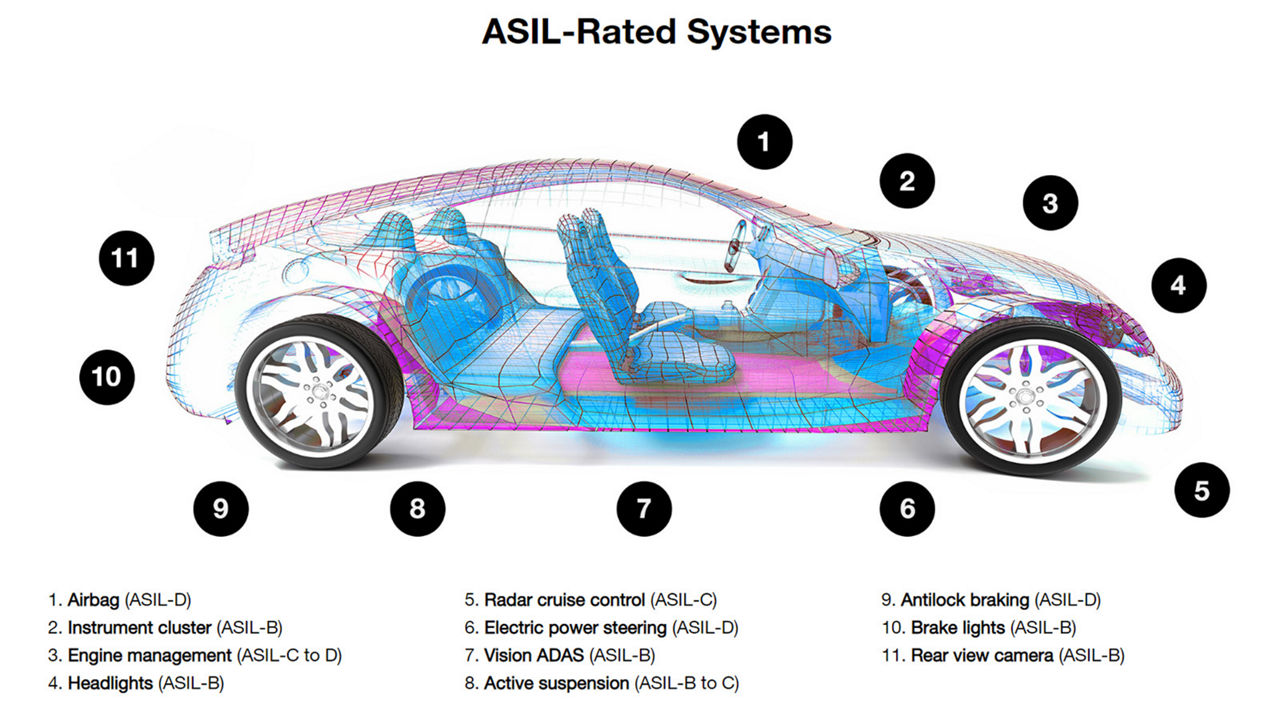Login / Register
With the increasing momentum in the deployment of self-driving cars, there is also an increasing focus on functional safety. Ensuring that the hardware systems in vehicles meet standards for mitigating safety risks is of paramount importance because the complexity at the component and system level for many emerging Advanced Driver Assistance Systems (ADAS) platforms is equivalent or greater than those in data centers. In fact, many of today’s vehicles with L2 and L3 capabilities are based on data center components and SoCs, such as special purpose vision processors, GPUs and high-performance memory.
ISO 26262 Semiconductor Classification
To regulate the functional safety of self-driving cars, the ISO 26262 standard was created. When the safety standard was first introduced, there was limited consideration for semiconductors. After more consideration, there was a rather quick adaptation of the ISO 26262 standard for semiconductors to help address the situation: semiconductors are grouped by Class I, II or III, corresponding to the complexity of the device and the associated requisite safety implementation. System integrators may classify memory as a Class II device (few operating modes/states to be analyzed for safety, no internal safety mechanisms). However, when you look under the hood of today’s DRAM, you will find that there is a great deal of underlying complexity and functionality required for memory to be able to deliver increasing levels of performance at reduced power. Memory in vehicles also needs to scale in density at continuously lower costs while employing today’s most advanced semiconductor process technologies. Micron contends that memory products for safety applications should be consistently classified as Class III complex semiconductors per the guidance in the standard, the same categorization assigned to processors, SoCs and GPUs. Class III elements need to be fully designed to meet ISO 26262 requirements.
Micron LPDDR5 ASIL-D ISO 26262 Certification
The ISO 26262 standard also defines various safety levels in a risk-classification system from A through D. Systems with an A level rating (such as rear lights) represent the lowest degree of risk with a failure while systems with a D level (such as anti-lock brakes) represent the highest risk.

With the announcement and introduction of the LPDDR5 ASIL-D ISO 26262 product and process certification from exida, Micron continues to lead the industry; the ASIL-D product certification is a first for memory technology and the LPDDR5 is the first of many ASIL compliant products to follow from Micron.
"Over the past four years, Micron has invested significant effort in enhancing its development processes to meet the stringent requirements of the ISO 26262 functional safety standard to the highest integrity level, ASIL-D," said Alexander Griessing, chief operating officer and principal safety expert at exida. "The company’s LPDDR5 device family is architected from the ground up for functional safety, with innovative safety features that go far beyond current industry standard while maintaining compatibility to the JEDEC specification. These advances and the release of the first truly ISO 26262-compliant DRAM product mark an important milestone within the semiconductor industry and will enable the next generation of reliable and safe autonomous driving systems."
Micron’s LPDDR5 ASIL products include on-chip safety measures that provide advantages to system designers beyond typical JEDEC standard products. These advantages include fault detection capabilities that can meet industry ASIL-D random hardware error metrics. Moreover, these safety features enable significant power reductions, performance improvements, memory efficiency and board area savings over traditional safety implementations and strategies that are based upon employing in-line ECC or redundancy to achieve requisite system level safety targets. Micron's continued commitment to the automotive industry ensures that the design and development of our LPDDR5 is on-par with the ASIL-D compliance applied to other Class III complex devices, such as processors, SoCs and GPUs.
 Micron LPDDR5 is ISO 26262 ASIL-D certified
Micron LPDDR5 is ISO 26262 ASIL-D certified
A Continued Automotive Commitment
As another indication of our commitment to delivering best-in-class functional safety solutions, several years ago Micron formed a safety office that is staffed with engineers to ensure that Micron products and processes are defined and designed with safety in mind and specifically to achieve ASIL level D systematic fault coverage. In addition to these commitments, Micron also offers extensive safety analysis collateral for existing QM-grade products to support customer integration, and an extensive global network of automotive system labs near many customer locations that delivers remote, virtual lab support.
You can visit Micron’s website to learn more about our leadership solutions and our commitment to safety. When designing your next-generation ADAS platform based on Micron’s functional safety portfolio you have confidence that you are designing in the industry’s best-in-class ASIL-D certified memory. And by leveraging the innovative random fault mitigation features, you can save board area, power and cost, while improving memory utilization and efficiency. Happy designing!